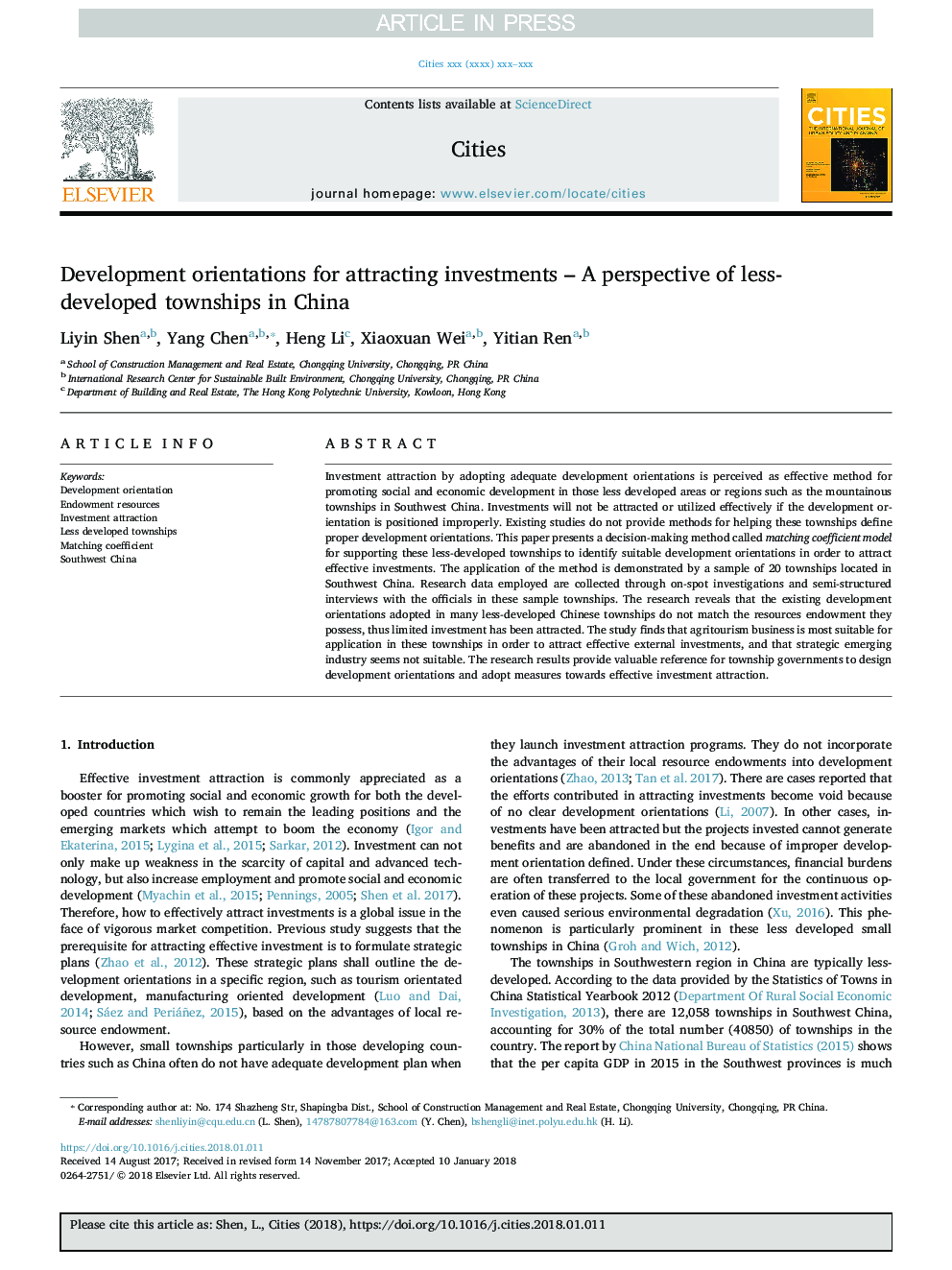| Article ID | Journal | Published Year | Pages | File Type |
|---|---|---|---|---|
| 7417423 | Cities | 2018 | 12 Pages |
Abstract
Investment attraction by adopting adequate development orientations is perceived as effective method for promoting social and economic development in those less developed areas or regions such as the mountainous townships in Southwest China. Investments will not be attracted or utilized effectively if the development orientation is positioned improperly. Existing studies do not provide methods for helping these townships define proper development orientations. This paper presents a decision-making method called matching coefficient model for supporting these less-developed townships to identify suitable development orientations in order to attract effective investments. The application of the method is demonstrated by a sample of 20 townships located in Southwest China. Research data employed are collected through on-spot investigations and semi-structured interviews with the officials in these sample townships. The research reveals that the existing development orientations adopted in many less-developed Chinese townships do not match the resources endowment they possess, thus limited investment has been attracted. The study finds that agritourism business is most suitable for application in these townships in order to attract effective external investments, and that strategic emerging industry seems not suitable. The research results provide valuable reference for township governments to design development orientations and adopt measures towards effective investment attraction.
Keywords
Related Topics
Social Sciences and Humanities
Business, Management and Accounting
Tourism, Leisure and Hospitality Management
Authors
Liyin Shen, Yang Chen, Heng Li, Xiaoxuan Wei, Yitian Ren,
